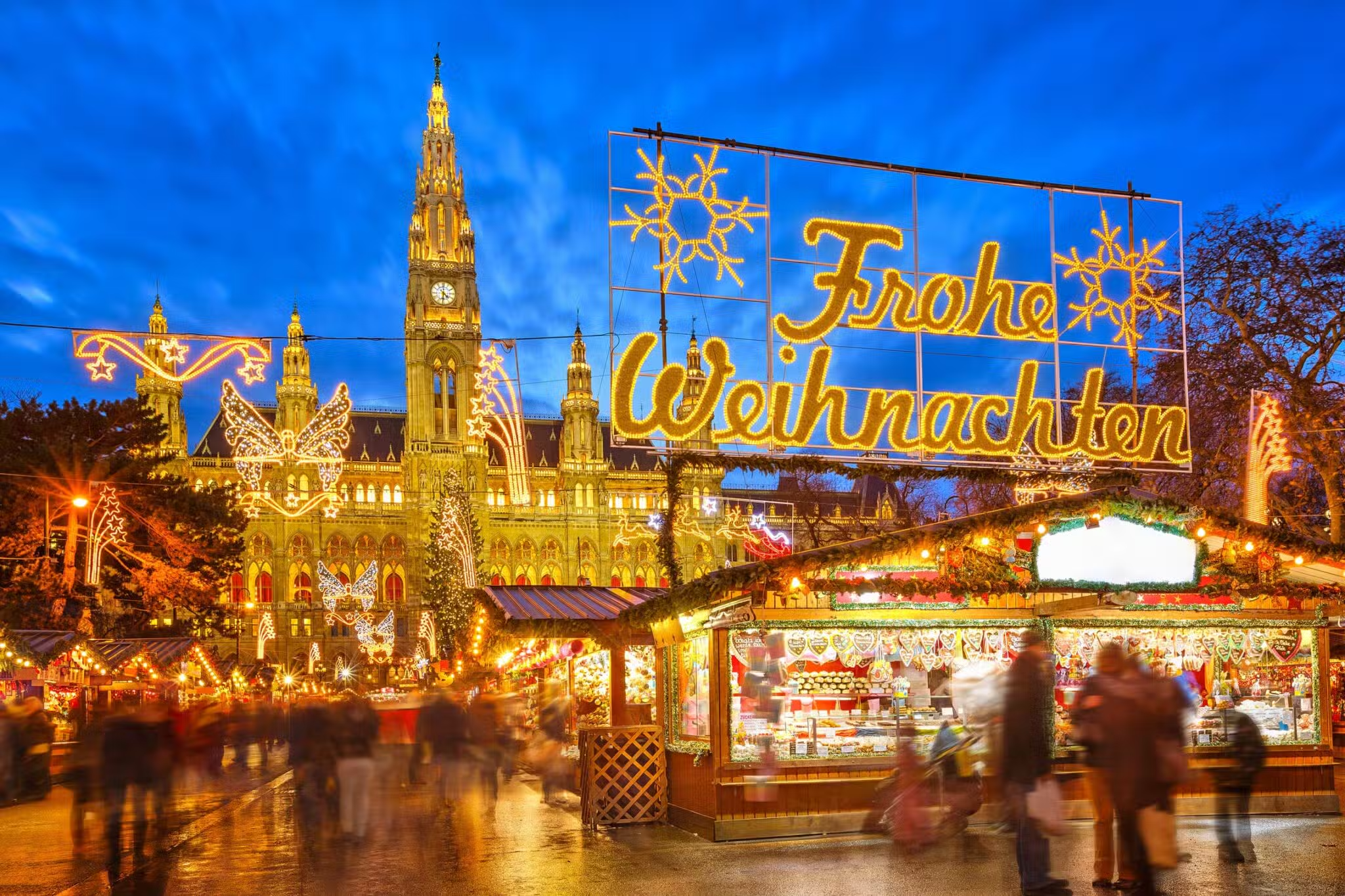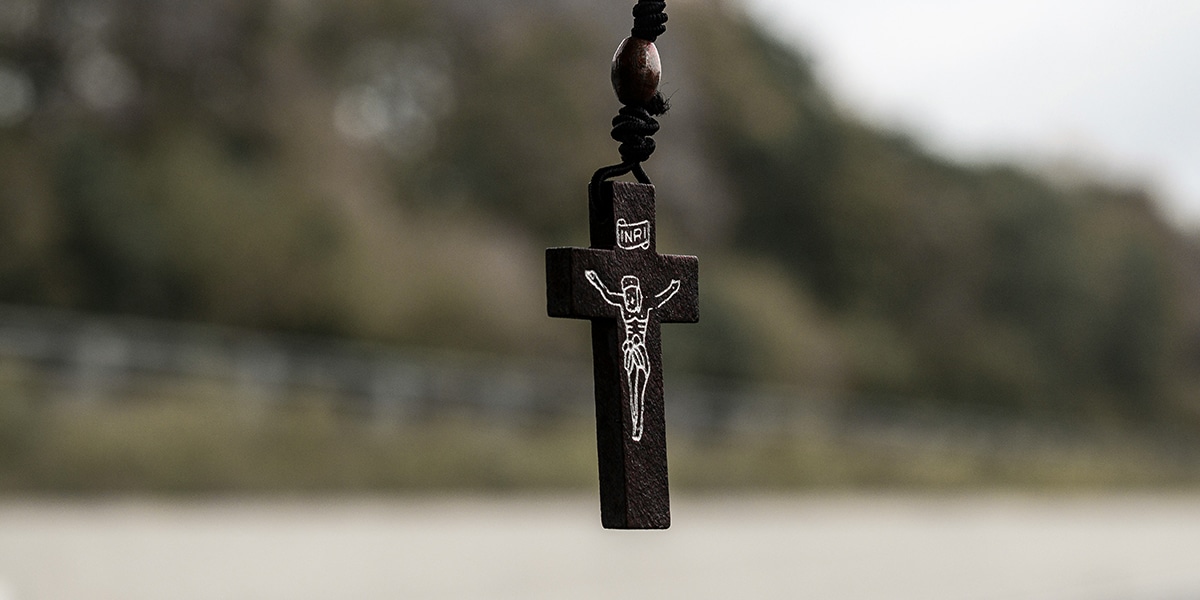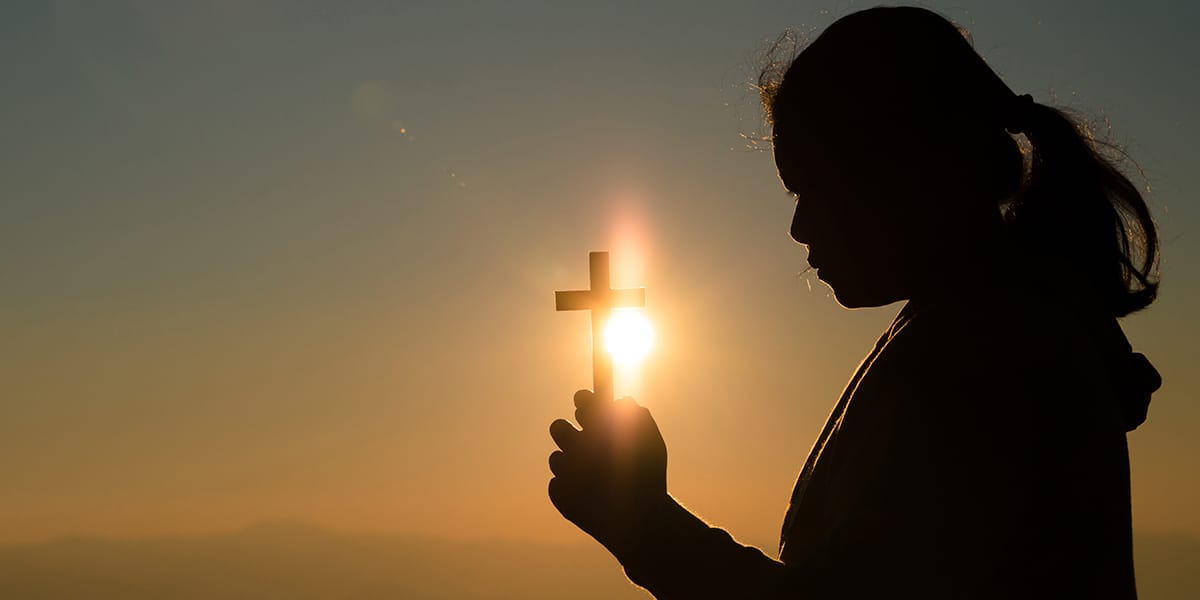This is a country where the normal greeting is a smiling “Grüss Gott ” ( “God be with you “). The spirit of this greeting is lived out in the season celebrating the Incarnation of that goodness in Jesus Christ.
Five holy days during this period are national holidays: the Feast of the Immaculate Conception (December 8), Christmas (December 25), Saint Stephen’s Day (December 26), New Year’s (January 1) and Epiphany (January 6). To emphasize the sacred and family aspects of these days, all offices, stores and even many restaurants are closed.
Following Francis
We discovered that the Austrian Christmas has a strong Franciscan connection. Saint Francis himself worked hard to humanize the Christmas message of hope and generosity. In 1223, Francis created a crche in Greccio with live animals and people to bring the Christmas story to life. Throughout Austria today, beautiful nativity scenes are seen in homes and churches, museums and town halls.
Early Franciscans wrote carols and in the 1280s spread Christmas music to Austria, where musical celebrations of the season continue to flourish.
Our travels to learn about Christmas in Austria brought us to the ancient Franciscan friary in the heart of Vienna. Father Patrick Schaffler, O.F.M., smiled as he politely told us, “Of course we have beautiful festival liturgies, but the dinner that we serve to 150 poor people the next day on the Feast of Saint Stephen is more important. ”
The intense, young Franciscan priest proudly showed us a copy of a painting by the famous artist Ferdinand Waldmüller (1793-1865) of friars feeding needy people at this same house more than 150 years ago. Father Patrick continued, “Our annual dinner for the poor keeps us in touch with our traditions. ”
Franciscans in Austria
All four branches of the Franciscan friars are represented in Austria. Including Third Order friars, they have 65 residences. Our travels brought us into contact with churches served by the friars, but with none of Austria’s Poor Clare monasteries, convents of Franciscan sisters or Secular Franciscan fraternities.
In Innsbruck, the Franciscan church is the Hapsburg Royal Chapel, a very historic church in the alpine Tyrol province. Franciscans from the Tyrolese Province of Saint Leopold came to Cincinnati, Ohio, in 1844 to serve the German immigrant population. Their friar-successors began St. Anthony Messenger in 1893.
In Vienna, several Franciscan communities reflect the cosmopolitan nature of the city. One church is staffed by friars from Eastern Europe. Franciscans from Croatia serve at another parish. A third parish traces its beginnings to Conventual Franciscans who came to Vienna in 1224. For the last 200 years, that parish has been the center of worship for Italians in Vienna. A fourth, the Capuchin Franciscan church, has the tombs of 138 Hapsburgs, including all of Austria’s monarchs from 1619 to the end of the dynasty in 1918.
When asked how the Franciscans came to staff such distinguished churches as the Royal Chapel in Innsbruck or the Capuchin church in Vienna, Father Patrick explained, “Franciscans have always been popular in Austria because they work with and are close to the people. ”
We visited Father Patrick at the friary next to Vienna’s Saint Hieronymus (St. Jerome) Church, a 1603 Renaissance building with the oldest organ in Vienna. The flamboyant 18th-century baroque high altar dramatically rises all the way to the ceiling. The friary itself is the headquarters of the Province of St. Bernardine of Siena, who preached in that area in the 15th century.
Father Patrick ignored these artistic treasures and spoke instead about social justice. “The Church is in crisis. One hundred years ago, the Church and the state were united. Now they are separate, and the Church has lost much power and security, ” referring to the end of the Hapsburg monarchy in 1918. “Society is changing, ” he continued. “Women have leadership roles in government and business, but not in the Church.
“In response to these problems, the Church needs to be renewed through a life with the poor, ” Father Patrick concluded. “Saint Francis had no rule. He left us his powerful example. ” Consequently, Father Patrick emphasized his colleagues’ efforts to establish “a community with the poor ” through such activities as providing a simple breakfast for about 60 poor people at the friary each morning.
Father Patrick expressed concern about the growing secularization of the Austrian Christmas such as the recent importation of “Rudolph the Red-nosed Reindeer ” from the United States. By comparison with Christmas celebrations in the United States, we found the Austrian Christmas robustly religious!
In order to help visitors understand and celebrate this season along with the Austrians, the Vienna city tourist information offices distribute a free 48-page brochure in English, which is entitled Advent and Christmas in Vienna: Events and Information.
Published by the Archdiocese of Vienna, the brochure lists Masses and other services (including the music to be performed) for all Catholic and other Christian churches. Historical and biblical background is given not only for major feasts but also for a fascinating array of minor feasts such as Saint Nicholas Day on December 6.
On that day in Austria, people dressed as the saint are often accompanied by a wicked furry devil called Krampus, who gives coal or sticks to bad children. The original Saint Nicholas was a fourth-century bishop in Asia Minor. His feast day is loved by Austrian children, who receive small gifts of sweets and toys.
Visiting the Advent Markets
The outdoor Advent markets, first held in Vienna in the 13th century, are not commercial intrusions on a religious holy season but a genuine support to its celebration. At the magnificent neo-Gothic Vienna Town Hall, 140 stalls offer seasonal decorations and handicrafts, food and drink. Part of the market is especially devoted to children storytelling, pony rides, magic shows and a merry-go-round. Children also participate in activities such as making presents or baking cookies. Vendors have agreed not to sell toy weapons.
Advent markets now thrive throughout Austria. We arrived in Salzburg on December 23 in time to visit its Advent market. It was dark at 5 p.m., but bright lights enlivened the snowy market streets.
Dozens of outdoor stalls sold an amazing variety of goods ranging from fur-lined boots to clocks. Displays of large pretzels, hot sausages, roasted chestnuts, potato pancakes, popcorn and fresh fruit were hard to resist. Of course, Christmas decorations and local crafts were everywhere. Children loved stalls devoted to toys and dolls, balloons and candy.
Embraced by Music
As we enjoyed a mug of steaming hot punch, a choir of children sang and presented a small play on the cathedral steps. As soon as the children finished, a brass band began to play in a nearby courtyard. In Austria and especially Salzburg, music is everywhere.
With such a lively scene, it was no surprise that hundreds of people around us braved the freezing weather to shop, eat, drink and socialize. The Christmas markets are open until 8 or 9 p.m., in contrast to the 6:30 p.m. mandatory closing for all other stores in Austria.
The next day, we visited the Salzburg city museum, where the main exhibit featured more than 20 antique and contemporary nativity scenes. In one crche, the Holy Family was serenaded by dozens of figures representing characters from well-known operas such as Mozart’s The Magic Flute.
As we emerged at noon, the stores and most restaurants were closing for Christmas Eve and Day, as well as the feast of Saint Stephen. Even our hotel restaurant was closed for the next three days. The desk clerk apologized, “In Austria, people want to celebrate Christmas with their families. ”
That afternoon, we took a short bus ride through forests of snow-covered evergeens to the town of Oberndorf. There, a special Christmas Eve ceremony commemorates the first performance of “Silent Night ” in 1818. The carol was composed by Franz Xavier Gruber, the parish organist, for lyrics written by Father Joseph Mohr, the assistant pastor. The song was first played at Midnight Mass on Father Mohr’s guitar, because the organ was not working. A simple white chapel with stained-glass windows built in the 1930s commemorates the original church, which was destroyed in a flood.
Among thousands assembled around the chapel in the growing dusk, a group of Japanese pilgrims prayed and sang carols, including “Silent Night. ” A beautiful program of Christmas music by the town choir and brass band ended with a moving rendition of the song.
We looked forward to attending the 10 p.m. Christmas vigil Mass at the Franciscan church in Salzburg. The church is part of the complex of buildings including the residence of the prince-archbishops who ruled the city for hundreds of years until 1805. Although we arrived just as the doors were opening at 9:30 p.m., the large crowd meant that we got the last seats.
The church was in darkness. Its stark Gothic outlines were barely visible. With the playing of “Silent Night ” at 10 p.m., the altar suddenly appeared in an explosion of light. The music for the remainder of the two-hour service was Gruber’s Mass in D Sharp, supplemented by several versions of his famous carol.
We went to the cathedral at 10 a.m. for the two-hour celebration of Christmas Day Mass with wonderful music. The temperature inside these unheated churches was the same as outside (a brisk 35 degrees Fahrenheit). Thermal underwear and layers of clothing including gloves are essential. Despite these difficult conditions, both Masses included full complements of soloists, choir and orchestra.
For the remainder of Christmas, Salzburg offered more than a dozen musical events. We chose a harp concert in the cozy lounge of a hotel in Monchstein Castle, 1,000 feet above the town. An hour of gentle harp solos concluded with “Silent Night ” an appropriate end to a perfect Austrian Christmas celebration of music outdoors, in churches and finally in a warm room!
Pope Sylvester and Epiphany
We left Salzburg the next day for Vienna, but missed the friars’ Saint Stephen’s Day dinner for the poor. We returned to visit the Franciscans at Saint Jerome’s a few days before Epiphany. Franciscan Father Gottfried Wegleitner told us that their annual December 26 celebration had been a success. More than 150 poor people were served in a large room at the friary. The meal included Wiener schnitzel and salad, supplemented by Gospel readings.
Father Gottfried told us of other Franciscan social-justice projects. In Salzburg, for example, soup is given daily to the poor. In Innsbruck, two friars share the life of their guests in a recently established Caritas House, which coordinates relief and social-service efforts. (Caritas is part of an international Catholic agency.)
Father Gottfried also emphasized that the spirit of Christmas is enjoyed throughout the season. In Austria, New Year’s celebrations are named for the December 31 feast day of fourth-century Pope Sylvester I. Vienna is justly famous for its “Sylvester ” operettas, balls and concerts. But there is also an impressive range of religious events throughout town. St. Augustine Church at the Hapsburg Palace holds Sylvester celebrations at 5 p.m. (Mozart’s Coronation Mass) and the next day at 11 a.m. (Schubert’s Mass in B Sharp). At his own St. Jerome Church, Father Gottfried explained that about 20 people welcomed the millennium at the Sylvester prayer service in the chapel from 11 p.m. to 1 a.m.
As we were leaving the friary, Father Gottfried showed us an inscription chalked over several hallway doors “C+M+B ” with the year. He explained that this annual Epiphany inscription served as a reminder of its two meanings the blessing “Christus mansionem benedicat ” (May Christ bless this house) as well as the initials of the Three Kings (Casper, Melchior and Balthazar).
Saint Matthew’s story of “wise men from the East ” (2:1-12) is brief. Scholars and long tradition have spun identities and symbolism to demonstrate the universality of Christ’s message. Casper (also called Gaspar) from Asia Minor is a tall beardless youth. Melchior from Arabia is old and venerable, with a long beard. Balthazar from Ethiopia is middle-aged, with a short beard.
As we emerged from the friary, we saw the Three Kings themselves! Carrying a replica of the star of Bethlehem, three young girls dressed in the bright robes of the Magi were singing Christmas and Epiphany carols. “Star singers ” such as these visit homes and cafes, hospitals and senior citizen centers to chalk over the door the same blessing we had seen within the friary.
We concluded our Austrian Christmas visit in Vienna as it had begun two weeks earlier at the Advent market in Salzburg with a group of children praising in song the newborn Savior. Saint Francis would have felt right at home.








